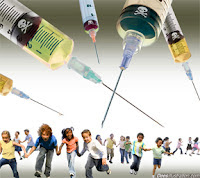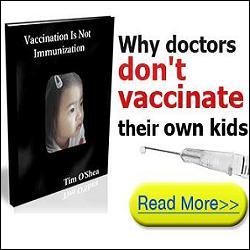 |
| Dees Illustration |
Sayer Ji, Contributor
Activist Post
A newly published article written by a former WHO vaccine committee member has revealed that estimates for pertussis vaccine efficacy have been greatly inflated because of inaccurate case definitions adopted by the WHO in 1991 which required laboratory confirmation and 21 days or more of paroxysmal cough, excluding and therefore concealing a veritable submerged iceberg of vaccine-resistant cases of pertussis infection.
I was a member of the WHO committee and disagreed with the primary case definition because it was clear at that time that this definition would eliminate a substantial number of cases and therefore inflate reported efficacy values. 4–11 Nevertheless, the Center for Biologics Evaluation and Research of the Food and Drug Administration accepted this definition, and package inserts of the US-licensed DTaP vaccines reflect this.
The article, written by James D. Cherry, and published in the July. 2012 edition of Pediatrics, the official journal of the American Academy of Pediatrics, pointed out that following the 2010 pertussis epidemic in California, “there was considerable concern in the press and in public health communications about the possible contribution of vaccine failures to the problem.” At that time, the media and government health officials focused on the lack of sufficient vaccine coverage and subsequent waning herd immunity, without questioning whether pertussis vaccination actually results in effective immunization, which clearly it was not.
Perhaps already a tacit acknowledgement that the vaccines are much less effective than what the manufacturers state is the fact that the CDC recommends infants and children get the DTaP vaccine no less than 5 times by age 6 (2 months, 4 months, 6 months, and 15 months through 18 months of age, with a booster at 4 through 6 years of age).
The reality is that pertussis vaccines have failed many times in the past, and will continue to do so. In three major outbreaks in Great Britain (1974-5, 78-78 and 82) 30% of infected children had received all three required doses of pertussis vaccine.[i] Worse yet, in the 1993 pertussis epidemic in Cincinnati, OH, infection occurred primarily among children who had been immunized. The authors concluded:
Since the 1993 pertussis epidemic in Cincinnati occurred primarily among children who had been appropriately immunized, it is clear that the whole-cell pertussis vaccine failed to give full protection against the disease.[ii]
More recently, in Kings County Washington, between 2002-2007, of the 176 cases of pertussis in infants under age one, 77% were age-appropriately vaccinated.[iii]
Ultimately, the World Health Organization’s arbitrary and vaccine-friendly case definitions distort and occlude the fact that the incidence of pertussis is actually rising in many countries – which is all the more disturbing considering that primary immunization with 3 doses of the pertussis vaccine within the first 6 months of life now exists in most countries because of the WHO’s global push towards universal vaccination.[iv]
This is all the more suspect considering that crowded conditions, poor nutrition, lack of hygiene and sanitation, and other environmental factors which affect immune function (immune state determines susceptibility to infection) are not even part of the discussion.
Furthermore, a great number of serious, if not also sometimes fatal adverse effects have been identified to be unintended, adverse effects of pertussis and DPaT vaccination. How can we continue to justify, therefore, the use of a vaccine that lacks effectiveness which may also cause severe harm to children who are in their pre-vaccinated state already healthy?
Notes:
[i] G T Stewart. Whooping cough and pertussis vaccine: a comparison of risks and benefits in Britain during the period 1968-83. Dev Biol Stand. 1985;61:395-405. PMID: 3835080
[ii] C D Christie, M L Marx, C D Marchant, S F Reising The 1993 epidemic of pertussis in Cincinnati. Resurgence of disease in a highly immunized population of children. N Engl J Med. 1994 Jul 7;331(1):16-21. PMID: 8202096
[iii] Matthew P Hanson, Tao S Kwan-Gett, Atar Baer, Krista Rietberg, Mara Ohrt, Jeffrey S Duchin. Infant pertussis epidemiology and implications for tetanus toxoid, reduced diphtheria toxoid, and acellular pertussis (Tdap) vaccination: King County, Washington, 2002 through 2007. Arch Pediatr Adolesc Med. 2011 Jul ;165(7):647-52. PMID: 21727277
[iv] Tina Tan, Evelinda Trindade, Danuta Skowronski Epidemiology of pertussis. Pediatr Infect Dis J. 2005 May;24(5 Suppl):S10-8. PMID: 15876918
RELATED ACTIVIST POST ARTICLE:
You can support this information by voting on Reddit HERE
This article first appeared at GreenMedInfo. Please visit to access their vast database of articles and the latest information in natural health.
linkwithin_text=’Related Articles:’



Be the first to comment on "Why Whooping Cough Vaccine Does Not Work As Advertised"